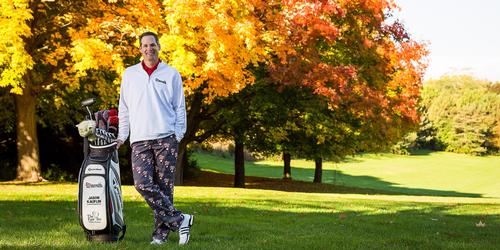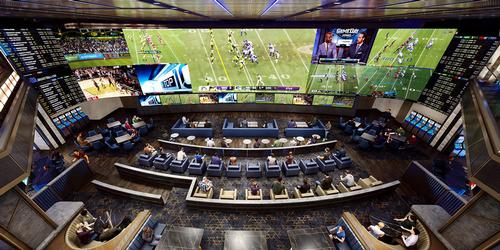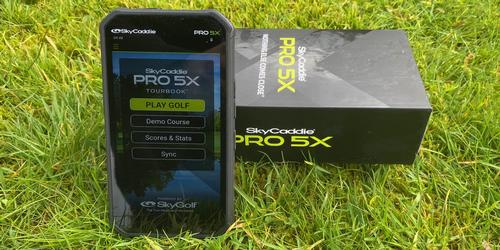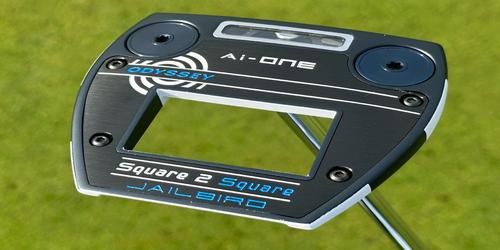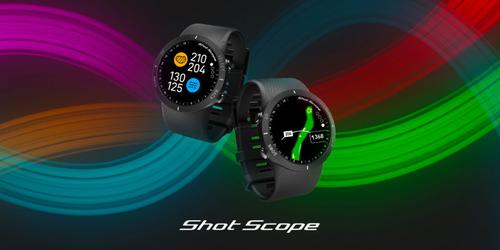Putting made easier with Bettinardi Golf
A look at the custom-fitting process through the eyes of a Chicago-area facility
By Matt Tevsh
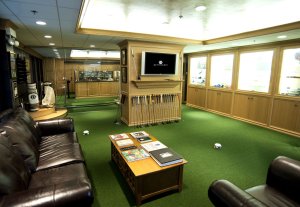
With Bettinardi Golf, quality is never compromised.
The higher-end brand, which has produced some of the finest putters on the market for over a decade, exacts details out of every step of the manufacturing process from its X-Cel Technologies engineering and milling facility in Tinley Park, Illinois.
In recent years, Bettinardi has taken its fine-tuning to yet another level.
Through a straight-forward, yet technical process, Bettinardi will fit customers for its premium putters. What starts with being able to pick out a precision-milled putter ends with that putter being adjusted to each customer's individual specifications.
"It's important to make sure the ball is rolling properly," said Bettinardi's custom-fitting guru Ben Bradbury. "We take all the variables out of it. When you come in here, we don't give you a lesson. We're not going to change the way you putt. We're going to fit that putter you pick out, or that putter you have, to fit your stroke. So in your head then, hopefully you have the peace of mind that the putter is set up for you.
"If it's not set up right, it's hard to be a good putter."
Bradbury's office with Bettinardi is essentially Studio B, a swanky second-floor putting area at the X-Cel Technologies facility that essentially doubles as a living room with leather couches and an LCD television. Among displays cases that include Bettinardi's 2010 line of putters, there are dozens of other Bettinardi putters to try out on the artificial green carpet. Behind glass walls is a separate work area where the custom-fitting process comes together.
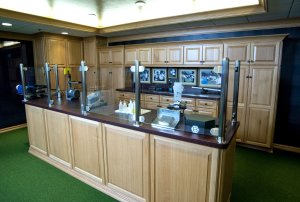
Getting fit for a putter is a much more uncommon practice than getting fit for other clubs through most major golf companies. That trend could start to change.
"I think most golfers would agree that the putter is probably the most important club in the bag - at least it's the club you use the most," said Bradbury. "And golf is going in that direction. Everything is being fit nowadays. Everyone wants to be fit for a driver, or new irons, so we've just kind of taken it to the putter. With it being the most important club, why would you not get fit?"
While most putters are manufactured through the casting process, Bettinardi's are milled out of a block of steel. The tight tolerances make the putters as close to perfect as it gets. Only Titleist's Scotty Cameron putters on the market can really compare.
But whereas being fit for a Cameron putter requires a visit on an invite-only basis to their California headquarters, Bettinardi's Studio B, opened in 2005, is open to the public.
There are basically three key areas to custom fitting a putter - length, lie angle, and loft. Here is a rundown of all three, Bettinardi-style:
LENGTH
This is perhaps the most inexact science of the fitting process. Length is simply the measurement from the sole of the putter to the top of the shaft or grip. How the proper length is determined for each individual is really based on a comfort factor.
"We basically look at the way someone sets up and where their hands fall on the putter," said Bradbury.
A comfortable set-up can vary from person to person, but the two most important factors to consider are if the person's eyes are directly over the ball at address and if his or her arms are hanging loosely. Bradbury will help in this process, but he encourages each person that comes in to set up to the ball with a natural position.
From there, Bradbury will take note of where to cut down the shaft, if at all. He can make the adjustment right on site, in the studio, in minutes or less. He will cut off the putter grip, cut the shaft down to the custom length, sand down the rough edges, put on some new grip tape, and then apply the new grip over the tape. Just like that, step one is done.
Bettinardi offers several putter grips to choose from on site. They come in various colors and designs. At least ten samples are available to test out.
Bradbury said that most people he fits end up with a 34- or 35-inch putter. In rare cases, he said, putters are extended from the industry standard of 35 inches.
LIE ANGLE
This next step can be described as the angle from the center of the shaft to the sole of the putter. The idea here is to try to get the putter to rest flat on the ground without compromising a person's set up.
A putter that sets up flat to the ground has a much better chance of making an accurate and solid strike with the ball. It also tends to aid a person's alignment at address. Bradbury will use his eye and technology to make sure this happens.
Without an extra set of eyes, it is difficult for the average golfer to know whether his or her putter is lying flat to the ground and thus pointed squarely at the target. In most cases (90% of Bradbury's customers), the lie angle will be flattened meaning before any adjustment, the toe of the standard putter is off the ground. In rarer cases, usually for taller golfers, the heel of the putter will be off the ground. The aim of custom fitting is to eliminate both problems.
Bettinardi's system for determining the correct lie angle starts with the customer setting up to hit a nine-foot putt on a separate artificial mat in the work area portion of Studio B. A small, ground-level camera behind the customer's putter will transfer images to computer software and to an LCD television. This gives a close-up view for the customer to easily see what Bradbury is talking about.
So how does Bradbury know how much to change the lie angle, if at all? A simple laser system gives him the answer.
Bradbury sets up a small, circular mirror on the toe of the customer's putter that reflects a laser to a large white board about an inch behind the hole. The white board contains grid lines each representing one degree both horizontally and vertically.
From here, it is easy to see for both Bradbury and the customer where the issues lie. The aim is to get the laser dot pointing as close to the darker, vertical center line as possible, but Bradbury says one degree either way is the "acceptable" range. The dispersion widens on longer putts.
Most people who come into to try the nine-foot putt in the studio are two degrees open or closed on average. Even one degree of change can make a difference on a shorter putt - from burning the edge of the hole to catching the edge.
The camera system not only allows the customer to see how many degrees he or she is off at address, but it also shows impact and finish positions (as the video can be paused at any time during the putt). From this information, Bradbury will then take the putter and bend it accordingly at the hosel at his work area. Bettinardi's standard lie angle is 71 degrees. Bradbury said that most of his customers are a couple degrees flatter than that.
As a measure of quality control, the customer will go back on the camera system after the adjustment to get instant feedback. If the desired results are achieved after trying a few more putts, step two is completed.
LOFT
Believe it or not, putters, like irons and woods, have degrees of loft. Standard putters range from three to six degrees, so it is easy to see why amateurs might not notice any loft with at first glance.
Determining correct loft, however, is critical, because even if steps one and two of the fitting process are done, step three ultimately gets the ball in the hole.
"(Loft) is probably the single most important thing because it determines the way the ball rolls," said Bradbury.
Too much loft on a putter can create too much backspin or skid, sending the ball ever so slightly off-line from the start, not to mention affecting the speed of the putt.
"We want the ball to have as little skid as possible, usually a couple inches of skid is pretty good," explains Bradbury, "but it all depends on how long of a putt it is because the harder you hit the ball the more skid you will most likely have."
Too little loft can trap or pinch the ball into the ground forcing it to pop up after impact.
From trial and error research, using slow-motion video, Bettinardi found that three degrees is an appropriate loft. "We found that will give you the best roll," said Bradbury.
It should be clarified here that three degrees at IMPACT is desired, not necessarily three degrees as the actual loft of the putter. This can again be determined with the white board, laser tools. Using the horizontal lines this time, a customer, for example, could set up at eight degrees loft with a three-degree putter. This would be indicated by the laser dot being five grid marks above the intended line.
After a few practice putts, results are analyzed with the software system. If the putter is coming through the impact zone at three degrees, no change is necessary. If it is coming through above that mark, it will be bent ever so slightly to achieve results closer to optimum.
Whether the actual putter loft is three degrees, six degrees, or eight degrees is really irrelevant. What is important is attaining that three-degree loft when the ball is being struck.
A closer examination from the side-angle, ground camera will show the effect of any changes. Here, the customer can see the reduction in the skid of the ball, or vice versa, the lack of pop-up action. Step three, and the custom-fitting process, is complete.
Any customer visits Bettinardi is as much a part of the custom-fitting process as Bradbury himself. From start to finish, the whole process can take as little as a half hour to get a putter, which just might be the best part. There is no wait for shipping like with other custom-fitted clubs.
"That's the misconception about the place is that they think, 'Oh, I'll come in and get fit and then how long do I have to wait to get my putter?' said Bradbury. "Well, you can get your putter here that same day. We'll actually fit you right here and make the changes right in front of you."
For more information on Bettinardi's line of golf products and its fitting process, go to www.bettinardi.com or call 708-802-7400.
Revised: 03/03/2010 - Article Viewed 33,609 Times
About: Matt Tevsh
![]() Matt Tevsh has been a freelance sports journalist since 1996. He has been published in multiple periodicals including Midwest Golfing Magazine and on various websites including GolfTrips.com. He is an avid golfer and a former member of the Golf Writers Association of America.
Matt Tevsh has been a freelance sports journalist since 1996. He has been published in multiple periodicals including Midwest Golfing Magazine and on various websites including GolfTrips.com. He is an avid golfer and a former member of the Golf Writers Association of America.






